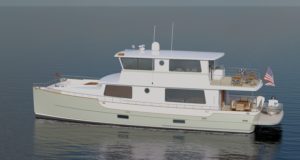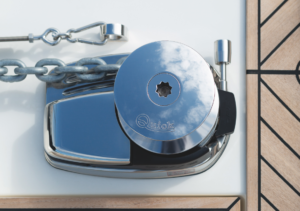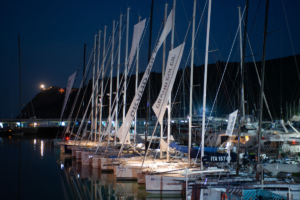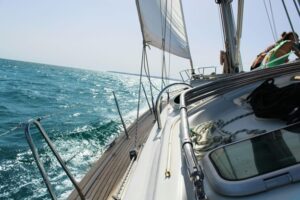
Catamaran Zurn rendering
Innovation engineering has appointed with the collaboration among Zuma Yacht Design and New England in order to create the cruising catamaran of the future. Zurn Yacht Design has teamed up with New England Boatworks to announce plans to build the Zurn 60 Powercat. This three-stateroom, five-head cruising yacht shows careful consideration for the comfort and privacy of passengers and crew with a truly revolutionary powercat layout.
The concept came from Doug Zurn of Zurn Yacht Design, who worked with a prospective owner with open-ocean cruising experience. New England Boatworks, located in Portsmouth, Rhode Island, is a leader in building power and sail yachts using advanced methods and materials.
ZURN 60
The Zurn 60 Powercat is a groundbreaking design that showcases the out-of-the-box thinking that has long made Zurn Yacht Design a leader in the yachting world. “The 60 Powercat is designed to focus on providing nice accommodations for the owner and a couple of guests,” Zurn says. “It’s an efficient cruising yacht with a design that’s an empty canvas in some regards.” The radical configuration starts with the main deck, where a master stateroom forward uses the full width of the deckhouse for a 270-degree field of view through expansive picture windows, as well as four large forward windows overlooking the foredeck.
The master is entered from a door on the starboard side deck and features a king-size berth on centerline, as well as a settee and a wide desk along the aft bulkhead, a suitable workspace for running the ship, or monitoring business interests from anywhere. Stairways to either side lead to his-and-hers head compartments located on the lower deck to port and starboard. A curving staircase at the entrance leads to the skylounge. The master stateroom has his-and-her heads, divided and situated on the lower deck in each hull, down a staircase on either side of the stateroom. Each of the heads has a dressing area with lockers, a sink with mirror, a private head compartment and separate shower with bench.
A pair of mirrored guest staterooms are abaft the master, also on the main deck. Because these aft staterooms are on the main deck, guests are greeted by enormous windows looking out over the sea. Each guest stateroom is a paragon of privacy, with insulated bulkheads attenuating sounds from other guests. Each stateroom has twin berths, but doubles can be fitted. Plenty of stowage is concealed in finely finished joinery, ready to welcome guests for extending cruising.
ZURN APPROACH
“Everybody gets a private, quiet corner of the boat,” Zurn says. “And with engines and generators placed well aft in engine rooms insulated by Soundown perforated aluminum, that will be true throughout the time onboard, whether under way or at anchor.” Zurn also noted an available solar-panel array that would help reduce generator use. The guest staterooms each have their own head positioned directly beneath on the lower deck. The guest heads are equipped with a private toilet compartment and separate shower. E

Zurn 60 rendering
ach guest head is insulated from the respective master head forward in each hull by a mechanical space where onboard equipment is housed, including water heaters, a watermaker, and more.
While a main-deck master on a 60-foot cruising yacht may be pioneering, it’s the focus on cruising that makes the Zurn 60 Powercat revolutionary. The position of staterooms and heads is more than just convenience and spectacular views—it’s a design feature that allows the yacht to have the narrow hulls to create cruising efficiency and performance, as well as a draft of less than four feet. A concept similar to Heysea
THE POWER OF ZURN 60
Powered with a pair of 435-horsepower Volvo Penta IPS600s, the Zurn 60 Powercat is expected to cruise at 18 knots and top out at 23 knots, with a range of 500 nautical miles at 18 knots. “This engine configuration is very efficient for a yacht with these dimensions,” Zurn says. “And the wide placement of the pods in a catamaran really capitalizes on the maneuverability.”
The views only improve when one considers the bridgedeck and skylounge, with all-around windows. With access by stairs from the aft deck or the master side-deck entrance, the upper deck is the primary indoor entertainment space on the yacht, where the skipper can oversee the navigation while also enjoying the company of guests. The helm station is forward and to starboard, with a pair of helm chairs, allowing the helmsman and companion to maintain watch and chart the yacht’s progress, with a large flat chart table to outboard. A reverse pilothouse windshield capitalizes on deck space while reducing glare and improving sightlines. A large L-shaped settee is opposite, surrounding a table suitable for coffee or cocktails. Substantial open deck space allows for the placement of loose chairs or other furnishings as desired, or fixed furniture can be specified. There’s a dayhead to starboard.
INTERIOR DESIGN
The stairway from the aft deck is flanked by the galley to starboard and a formal dining area to port, each benefitting from large windows in the sides and aft bulkhead. The dining area has a large sliding glass door in the aft bulkhead that opens onto an open upper deck aft.

The galley has the U-shaped design of a true cruising galley, with a stove aft and a large workspace outboard. The galley’s aft window opens wide to simplify serving an al fresco grilling station. This aft deck space is left to the owners’ devices, to be used as an outdoor dining area, a casual lounging area, or kept wide open for flexible use, from yoga at dawn to an evening disco.
Back on the main deck, the aft deck is sheltered by the flying-bridge overhang, and features an outdoor dining table with seating for eight. A hydraulic swim platform is set to be level with the main deck, so step-through gates lead to the platform, which can stow, launch, and retrieve an outboard-powered RIB tender. A recessed atrium with sliding glass pocket doors in the aft bulkhead of the superstructure has doors to the guest’s staterooms set at angles to port and starboard, flanking the centerline staircase that leads to the bridgedeck and skylounge.
Wide side decks lead to the foredeck. The forward cockpit is centered on a U-shaped settee with a table offering still another gathering spot, with an available bimini sun shade that can be set on carbon fiber poles.
Call for further inquiries and look for more news as the development of the Zurn 60 Powercat continues in the coming months.








